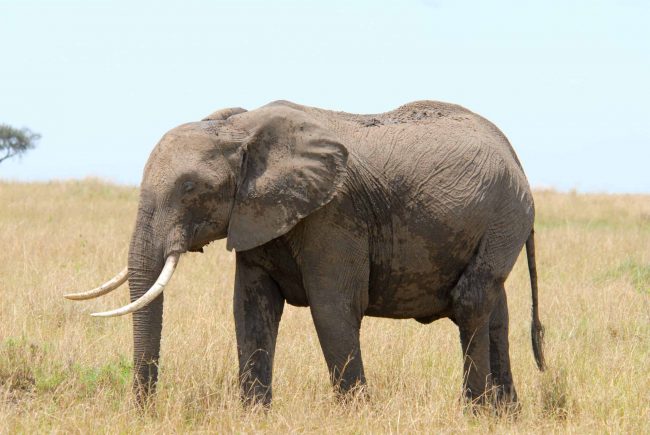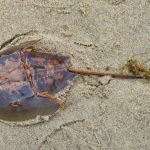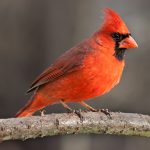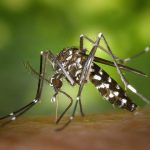There are certain creatures in the animal kingdom that live much longer lives than the average human does. However, compared to the hundreds of millennia that other species have lived to date, humans have an “absolute maximum” lifespan of 150 years. Some organisms can even halt or reverse the aging process, which is an incredible feat in itself. Despite the fact that there are certain land animals that may live to be over 190 years old (such as the world’s oldest tortoise), none of them fit this list; the true age champions are all found in bodies of water.
Freshwater Pearl Mussel
- Scientific Name: Margaritifera margaritifera
- Diet: Herbivores
- Life span: 140 years

Freshwater pearl mussels are a kind of bivalve that filters food particles from the water. They are mostly found in rivers and streams in Europe and North America, especially the United States and Canada, where they can be found in large numbers. According to the World Wildlife Fund, the freshwater pearl mussel with the longest known lifespan was 280 years old (WWF). Their lengthy life span is due to their sluggish metabolism, which is unique among invertebrates. The freshwater pearl mussel is a species that is in danger of extinction. In accordance with the International Union for Conservation of Nature, their population is declining as a result of a variety of human-caused challenges, including the destruction and change of the river ecosystems on which they rely, among other things (IUCN).
Tubeworms
- Scientific Name: Siboglinidae
- Diet: Omnivores
- Life span: 250 years
Tubeworms are invertebrates that may survive for a lengthy period in the frigid, steady environment of the deep sea. As reported in the journal The Science of Nature in 2017, a tubeworm species located on the ocean floor of the Gulf of Mexico, Escarpia laminata, may live up to 200 years, with some individuals living up to 300 years, according to research published in the journal The Science of Nature. Tubeworms have a low mortality rate because of a lack of natural predators, which has allowed them to evolve to live for such long periods in the wild.
Black Coral
- Scientific Name: Antipatharia
- Life span: 70 years

Corals are beautiful underwater rocks and plants that are made up of polyps, which are the exoskeletons of invertebrates. Corals are made up of polyps, which are beautiful underwater rocks and plants that are made up of polyps. In order to replace themselves, these polyps reproduce and replace themselves by making genetically identical replicas of themselves, resulting in the coral exoskeleton structure becoming ever bigger over time.
Corals, in contrast to Greenland sharks or ocean quahog clams, are made up of multiple similar individuals rather than being a single organism, and as a result, their lifespan is more of a joint effort than a single individual’s. Deep-water black corals are among the longest-living corals on the planet, with some specimens living for hundreds of years or longer. According to a previous report from Live Science, black coral specimens discovered off the coast of Hawaii were 4,265 years old.
Hydra
- Scientific Name: Hydra vulgaris
- Diet: Carnivores
- Life span: 140 years
Hydra are a species of small invertebrates with soft bodies that resemble jellyfish and are found in the ocean. Hydras, like as Turritopsis dohrnii, have the potential to live endlessly and are hence known as immortals. According to a previous report by Live Science, hydras do not show signs of aging or decay. The bulk of these invertebrates is made up of stem cells, which are capable of self-renewing by duplication or cloning. Hydras cannot survive continuously in the wild because of predators and sickness, but if they are not exposed to these external threats, they may be able to live indefinitely.
Geoduck
- Scientific Name: Panopea generosa
- Diet: Carnivores
- Life span: 146 years

The geoduck is a large, edible saltwater clam that belongs to the Hiatellidae family. It is found in freshwater and brackish water. A Native American phrase that meaning “dig deep” inspired the name of the company. The pronunciation of this clam is “gooey duck,” which is the polar opposite of the spelling, and the bizarre spelling is almost certainly the result of inaccurate transcription. The geoduck may be found in huge numbers on the west coast of North America, mostly in Washington State and British Columbia. The geoduck is one of the biggest clams on the planet and one of the most long-lived organisms on the planet, with syphons that may grow to be more than one metre in length. The oldest specimen ever discovered was 168 years old at the time of discovery.
Sturgeon fish
- Scientific Name: Acipenser transmontanus
- Diet: Carnivores
- Life span: 100 years

Since the end of the Triassic period around 200 million years ago, sturgeons have earned the moniker “primitive fishes” because they have stayed practically unchanged from their earliest remains. Throughout Eurasia and North America’s subtropical, temperate, and sub-Arctic lakes, rivers, and coastlines, the fish may be found in a variety of conditions. Sturgeon, which may grow to be 2 to 7 metres in length, are among the world’s longest-living fish, with an average lifespan of 100 years and the ability to grow to be 2 to 7 metres in length. Female lake sturgeon have the greatest life expectancy of any sturgeon species, with some individuals living up to 150 years in the water.
Orange Roughy
- Scientific Name: Hoplostethus atlanticus
- Diet: Carnivores
- Life span: 150 years
The Orange Roughy is a deep-sea fish that looks like a slime head and is rather large. This species may be found in deep seas (180–1,800m / 590–5,900 ft) in the Western Pacific Ocean, eastern Atlantic Ocean, Indo-Pacific, and Eastern Pacific off the coast of Chile, among other places. As the fish is alive, its color is a vibrant brick red, but when it dies, its color fades to a yellowish orange tinge. The radiometric dating of trace isotopes found in the otolith (“ear bone”) of an orange roughy revealed that the animal had lived for a maximum reported age of 149 years.
Box Turtle
- Scientific Name: Terrapene carolina
- Diet: Omnivores
- Life span: 100 years

Those who grew up in the eastern or Midwestern United States are likely to have come across a box turtle at some point. A pasture, woodland, or meadow are the best places to see this critter, and it’s common to see it near a stream or pond. The box turtle consumes a wide variety of foods, including insects, berries, snails, slugs, flowers, frogs, roots, birds, snakes, and eggs.
During the first five or six years of his life, a young turtle’s diet will consist mostly of carnivorous foods, but as he becomes older, his diet will become more varied. Given that the box turtle has a lifespan of more than 100 years, it is likely that a diversified diet will prevent him from being bored with the same old food.
American lobster
- Scientific Name: Homarus americanus
- Diet: Omnivores
- Life span: 100 years

Some lobsters live for an extraordinarily long period. Because of its frigid environment, the American lobster has the potential to live for more than 100 years. Because of the chilly Atlantic waters, the metabolism of the American lobster is delayed, allowing it to develop more slowly and live for extended periods, assuming it can escape predators. It has the potential to grow to be 64 cm long and weigh more than 20 kilos, making it not only the largest crustacean on the planet, but also the heaviest of any existing arthropod species.
The European lobster Homarus gammarus, which may be distinguished from the American lobster by its pigmentation and the absence of spines on the bottom of the rostrum, is the closest relative of the American lobster. While the color of American lobsters is normally a blue-green to brownish tint with red spines, there are other color variances.
Cockatoos
- Scientific Name: Cacatua galerita
- Diet: Omnivores
- Life span: 50-70 years

In general, cockatoos live for 50 to 70 years on average, depending on the species. They are a type of bird known for building deep relationships with people when kept as pets. Every species of cockatoo may be found in Australia and the islands around Oceania, which include Malaysia and the Philippine Islands. Cockatoos are distinguished by their large crests and bent bills. Compared to other parrots, their plumage is often less vibrant, consisting largely of white, grey, or black, with contrasting colors in the crest, cheeks, and tail. Their plumage is less vivid than that of other parrots. They are normally larger than other parrots; however, the cockatiel, the smallest of the cockatoo species, is a little bird compared to the others.
Greater Flamingo
- Scientific Name: Phoenicopterus roseus
- Diet: Herbivores
- Life span: 30-40 years

Among the six flamingo species, the larger flamingo is the most abundant. It may be recognized by its long neck, pink hue, and sharply curved black-tipped beak, among other characteristics. Despite the fact that greater flamingos have been known to live up to 60 years in captivity, they only live an average of 35 years in their natural habitat. Greater, the world’s oldest known greater flamingo, died at Adelaide Zoo in January 2014 at the age of 83, making him the world’s oldest known greater flamingo.
Asian Elephant
- Scientific Name: Elephas maximus
- Diet: Herbivores
- Life span: 48 years

These elephants may be found in India, Pakistan, Laos, Nepal, and Thailand, among other places. This species ranks second in terms of population size among elephants. The animal may grow to be 3.5 metres in height and weigh up to 5 tons in weight. Adult elephants have no natural rivals, with the exception of humans, who have traditionally used Indian elephants as a workforce.
Elephants live 60-70 years in the wild, while domesticated individuals kept in a healthy environment can live up to 80 years. Chengalloor Dakshayani, the world’s oldest elephant, died in February 2019 at the age of 88, making him the world’s oldest animal. Originally, from Kerala, India, she was held by the Travancore Devaswom Board and kept in the Chengalloor Mahadeva Temple in Thiruvananthapuram, the state capital.
Despite her advanced age, the world’s oldest female Asian elephant happily participated in municipal festivals, religious events, and processions, where she did an excellent job and appeared to be enjoying herself. However, during the final few years of her life, she became less active and ceased appearing at public events, which she regretted.
Saltwater crocodile
- Scientific Name: Crocodylus porosus
- Diet: Carnivores
- Life span: 70 years

It is possible to find saltwater crocodiles in brackish wetlands and saltwater settings from India’s east coast to northern Australia and Micronesia, as well as in freshwater ecosystems in the tropics. It has been included on the International Union for Conservation of Nature’s Red List as Least Concern since 1996. Toxin-producing animals were slaughtered for their skin across their range until the 1970s, and habitat loss and illegal killing currently threaten them. It is regarded as potentially dangerous to human health.
These crocodiles are the largest living reptiles in the planet. Males measuring up to 20 feet in length and weighing 2,900 pounds have been seen. They like to reside in coastal streams and rivers, where they can swim back and forth between salty and fresh water without becoming sick.
Galapagos Giant Tortoise
- Scientific name: Chelonoidis Niger
- Diet: Herbivores
- Life span: 120 years
It is not only the size of the Galapagos Giant Tortoises that should be noted; it is also their age that should be noted. They may live to be far over 100 years old, with the oldest known to have lived to be 152 years old! However, the oldest is not always the most well-known. Lonesome For a brief period of time, George was the sole living Pinta Island Tortoise on the islands, and for a brief period of time, he was the world’s most endangered animal. He passed away in 2012, when he was around 100 years old. As with many of the species on our list, giant tortoises enjoy a leisurely pace of life. They spend their days eating grass and other plants, lounging in the sun, and sleeping for up to 16 hours a day.
Bowhead Whale
- Scientific name: Balaena mysticetus
- Diet: Herbivores
- Life span: 200 years above
Bowhead whales have been known to live for more than 200 years, making them the world’s longest-lived animals on Earth. They live their whole lives in the Arctic and subarctic regions, thus it is not always possible to determine their age from their appearance. They’re also known to outlive the researchers that study them, which is a good thing. In certain cases, shards of harpoons found in the blubber of caught animals can be used to estimate their age; one man claimed to have harpoon fragments dating back to the 1800s in his hands. Using DNA research, scientists have estimated the lifespan of bowhead whales to be 268 years, which they believe is an extremely long time for such a little animal.
Western Gorilla
- Scientific name: Gorilla gorilla
- Diet: Omnivores,
- Life span 30 to 40 years
Women give birth for the first time at the age of ten, and after that, they have one child every four years on average until they are about 30. Gorillas grow slowly and reproduce late in life—females give birth for the first time at the age of approximately ten—and mature slowly.
Native populations of these animals may live to be roughly 35 years old in their natural environment; nevertheless, they, like the other mammals on this list, are threatened by human activity, which includes habitat destruction. Together with their incapacity to breed, this has resulted in a reduction in their number and an increased danger of extinction for the species.
Antarctic Sponge
- Scientific name Cinachyra antarctica
- Life span 1500 years
Antarctic sponges can attribute their long lives to the harsh environment in which they thrive. Approximately 325 to 6,500 feet below the surface of the ocean, at extremely freezing temperatures, live these sponges, which number more than 300 species and may be found in every ocean basin. As a result of the hard environment, their development, and other biological processes are significantly halted, allowing them to exist for extremely extended periods.
Researchers discovered in 2002 that one Antarctic sponge species, Anoxycalyx joubini, has the extraordinary capability of surviving for up to 15,000 years, which is astounding. The same study showed that the Cinachyra Antarctica, which does not reside as deep underwater as the Anoxycalyx joubini, has a life span of up to 1,550 years and does not require as much food as the latter. The Cinachyra Antarctica does not dwell as deep underwater as the Anoxycalyx joubini, but it does survive in similar conditions.
Which Animals on Vancouver Island Have Longer Lifespans Than Humans?
Certain animals on vancouver island have longer lifespans than humans. For instance, the Pacific giant octopus, one of the most fascinating animals on Vancouver Island, often lives for up to five years. Similarly, the black-tailed deer, commonly found on the island, can reach an age of 10 to 12 years. These animals on Vancouver Island showcase the diverse and impressive lifespans that exist in the natural world.
African Elephant
- Scientific Name: Loxodonata africana
- Diet: Herbivores
- Life span: 70 years

With an average lifespan of 70 years, African elephants are the world’s biggest land mammals and one of the most ancient, as shown by their massive size and long longevity. Experts can estimate a person’s age based on a range of characteristics, such as the size of their teeth and the number of teeth they have on their teeth. This process necessitates the use of observational skills as well as a significant amount of experience.
The age at which females achieve breeding age is 10–12 years old, as opposed to the age at which humans reach breeding age, and, unlike us, they may stay fertile for the rest of their lives. They are likely to give birth to around seven children. Being a mummy elephant, on the other hand, is not a simple undertaking. It takes these animals 22 months to become pregnant, which is roughly three times as long as it takes a person to become pregnant.










